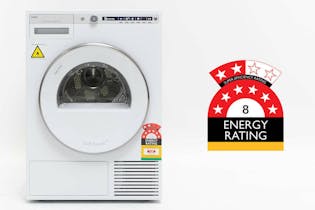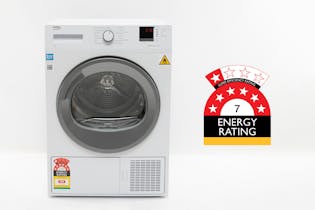Tips to get the most out of your clothes dryer
Whether you use your dryer every day or only on the odd occasion, follow our advice to get the most out of it.
Maintenance tips
Although tedious, a bit of TLC will keep your dryer in tip-top condition. Here are some simple maintenance tips:
- The heat exchangers in condenser dryers get clogged with fluff circulating in the air. Clean the heat exchanger at least 4 or 5 times a year.
- The water reservoirs in condenser and heat-pump dryers need to be emptied after nearly every load. This is easier if the reservoir is at the top of your dryer rather than the bottom – and you can avoid the hassle completely by plumbing your machine to a drain.
- Lint filters should be cleaned after every load. This improves drying efficiency and reduces the risk of fire. Cleaning will be easier if the lint filter’s near the front of your machine or on the door. Some dryers have more filters than others.
- Sensors won't work effectively unless you wipe the drum with white vinegar or stainless-steel cleaner every few months.
Troubleshooting your sensor dryer
Is your sensor clothes dryer stopping short of drying your clothes? A sensor clothes dryer should detect when a load is dry and stop running. This prevents over-drying, which can damage your clothes. Because it’s not running any longer than it needs to, you’ll save money on your power bill too. But what if your clothes dryer stops and you open the door to a still-damp load?
Troubleshooting tips
If you’re having trouble getting your sensor dryer to fully dry a load, try these tips:
Clean the moisture sensors: These are 2 metal strips that are usually inside the drum underneath the door. Over time, residue from washing powder and fabric softener can accumulate on the sensors, which reduces sensitivity. To clean them, switch the dryer off at the wall and wipe with a soft cloth and mild soap.
Sort your load: Mixed loads – for example, lightweight T-shirts and heavyweight jeans – can be challenging for a sensor dryer. For even results, dry similar-weight items together.
Use the right setting: Clothes dryers are becoming more sophisticated, with settings for different fabrics and items such as sheets and sportswear. It pays to read the user guide to check you’re using the most suitable setting for the type of items you throw in your dryer. For example, if your dryer has a “sheets” setting, use it as it will alternate the tumbling direction to prevent sheets tangling into a damp-centred ball.

Looking for a clothes dryer?
Choosing the right clothes dryer pays off in the long run. We’ve tested heat-pump, condenser and vented clothes dryers to find the most efficient, easiest to use and fastest.
Dryer safety
Before you throw laundry into the clothes dryer, make sure you've taken these basic safety steps.
- Lint build-up is a fire hazard. It can cause overheating and also reduces drying efficiency. Clean the lint filter after each use – and regularly move your dryer and vacuum up lint from the surrounding walls. If the dryer is ducted to the outside, clean any lint from the duct and the exhaust vent.
- Plastic items (such as shower caps and plastic-backed baby bibs) shouldn't go into the dryer: they'll melt.
- Items made of rubber can catch fire. Keep them out of the dryer, too.
- Watch out for clothes or towels that have been in contact with oils, waxes or products containing petroleum or alcohol (like hair-styling products) – they may be flammable. Make sure they've been washed in hot water before you put them in the clothes dryer.
- Always let the dryer complete its cool-down cycle then remove the load and spread it out.
- If you have to turn off the dryer before it’s finished, remove the load and spread it out to cool. Clothes left bundled up are more likely to catch fire by spontaneous combustion.
- Turn off the dryer whenever you're away from the house or are asleep.
- Kids are explorers, which means one could climb into a dryer. If you have small children, avoid models that start automatically when the door is closed.
- Allow plenty of ventilation around the dryer.
- If mounting or stacking your dryer, make sure you follow the manufacturer’s instructions and consider getting it professionally installed.
We've tested 71 clothes dryers.
Find the right one for you.



Member comments
Get access to comment